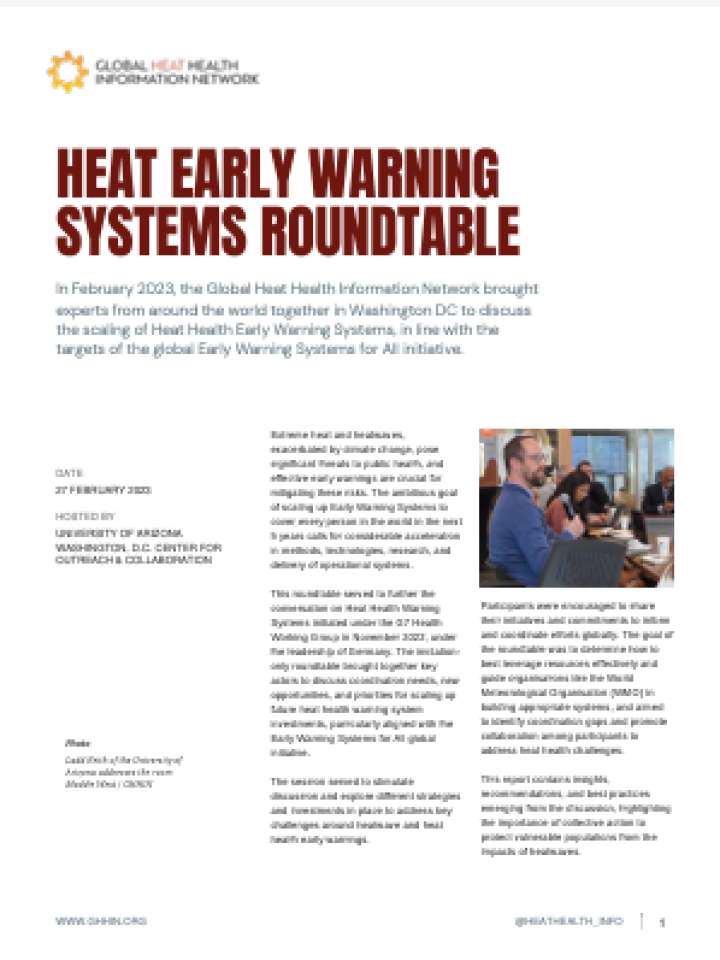Heat early warning systems roundtable
This report contains insights, recommendations, and best practices emerging from the discussion, highlighting the importance of collective action to protect vulnerable populations from the impacts of heatwaves. Extreme heat and heatwaves, exacerbated by climate change, pose significant threats to public health, and effective early warnings are crucial for mitigating these risks. The ambitious goal of scaling up Early Warning Systems to cover every person in the world in the next 5 years calls for considerable acceleration in methods, technologies, research, and delivery of operational systems.
Below are some of the recommendations raised by participants:
- The impacts of extreme weather are more severe in low-income countries, and addressing this inequity should be a priority. Extreme heat disproportionately affects the poorest and most marginalised people, and this impact is likely to increase in lower income contexts under the influence of climate change. Understanding vulnerability and targeting the most impacted populations, particularly in humanitarian contexts, is crucial in addressing the impacts of extreme heat.
- It is important to incorporate social sciences into research to better understand knowledge, attitudes, and practices related to heat stress. Understanding existing heat risk and vulnerability perceptions can inform behaviour change strategies and messaging.
- Tiered warnings with context-specific thresholds can provide alerts directly to service providers or caregivers for vulnerable populations. The higher mortality rate during heatwaves in certain regions highlights the need for more detailed research and messaging mechanisms, such as through pharmacies or volunteers, to reach hard-to-reach populations.
- Cascading risks should be incorporated into production and warning systems as well as in messaging to decision makers and communities that are facing concurrent threats to avoid conflicting or competing messaging.
- Instead of focusing on risk response projects, there should be a shift towards building systems for managing risks at the local level.
Explore further
